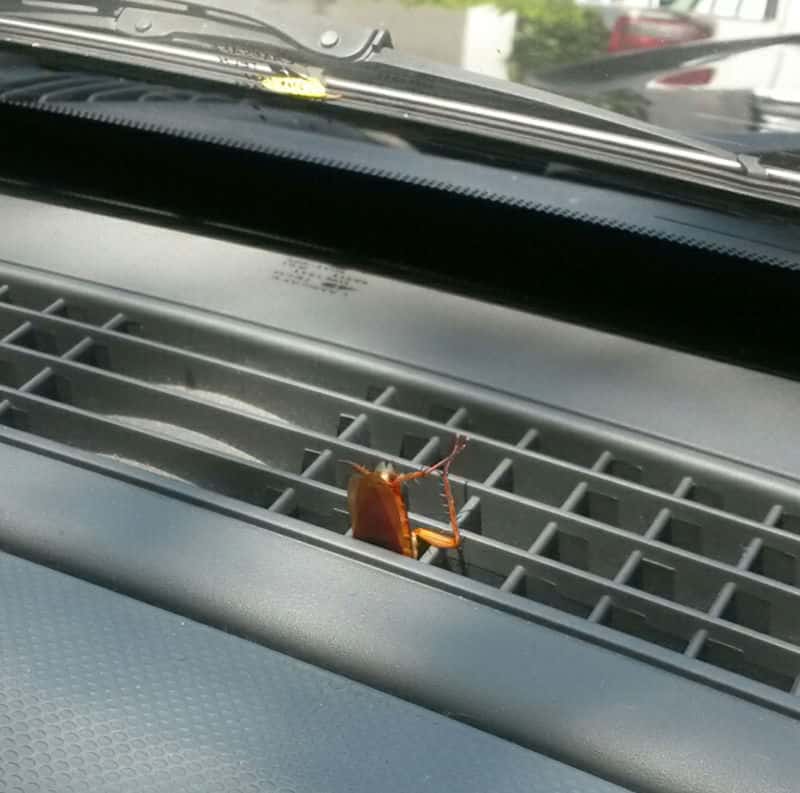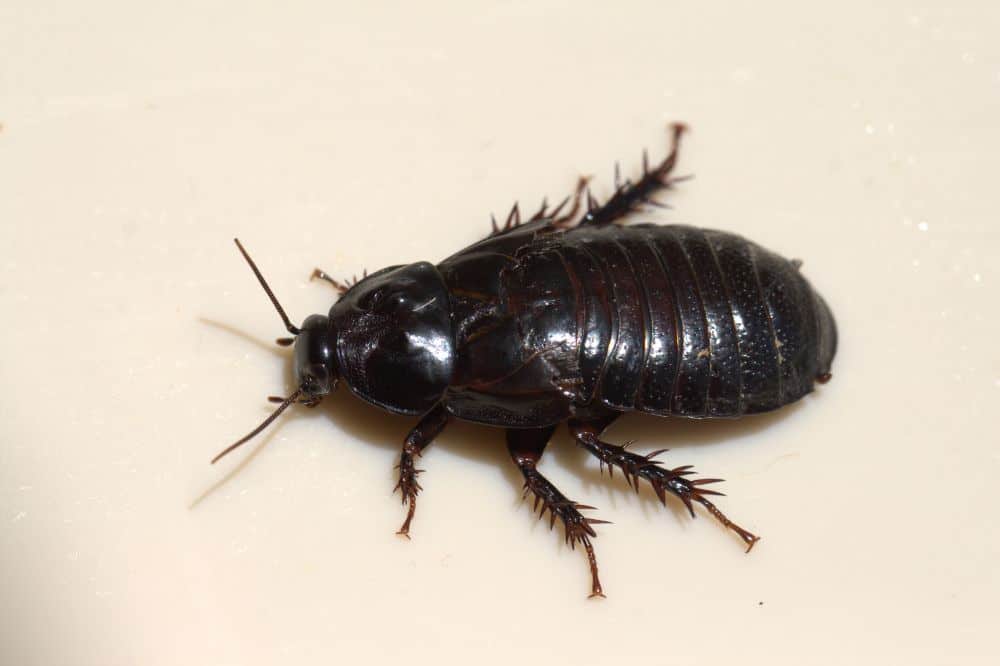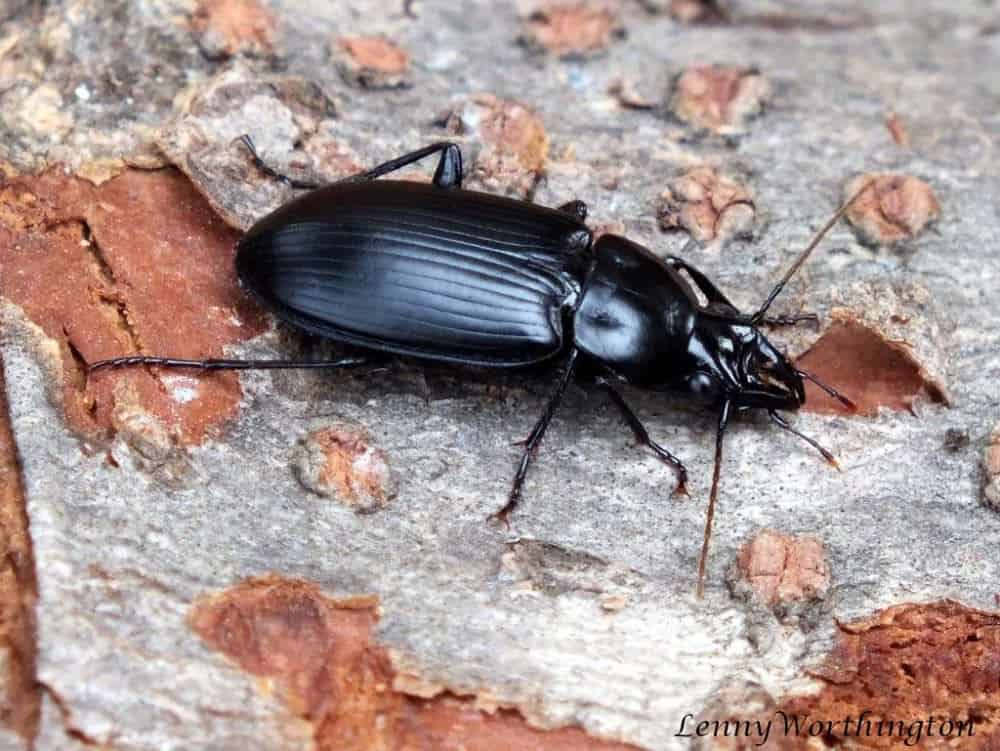Cockroach Eggs: How To Find & Kill Them
If you find one cockroach in your home, then chances are there will be more hiding in the shadows. When you find cockroach eggs, the problem becomes more severe. This is a sure sign of an infestation and the mere thought of that can be a frightening one.
The sooner you tackle the problem, the better. It’s the only way to make your home and family safe. We certainly don’t want these pests in our home, so immediate action is necessary.
What Do Roach Eggs Look Like?
Cockroaches do lay eggs, but the process is different from how other creatures and insects do it. Roaches make cases for their eggs: these are called oothecae.
The ootheca is a protective casing the female creates using protein, substances she produces in her body. The ootheca begins as a soft casing, which then hardens to give better protection for the eggs.
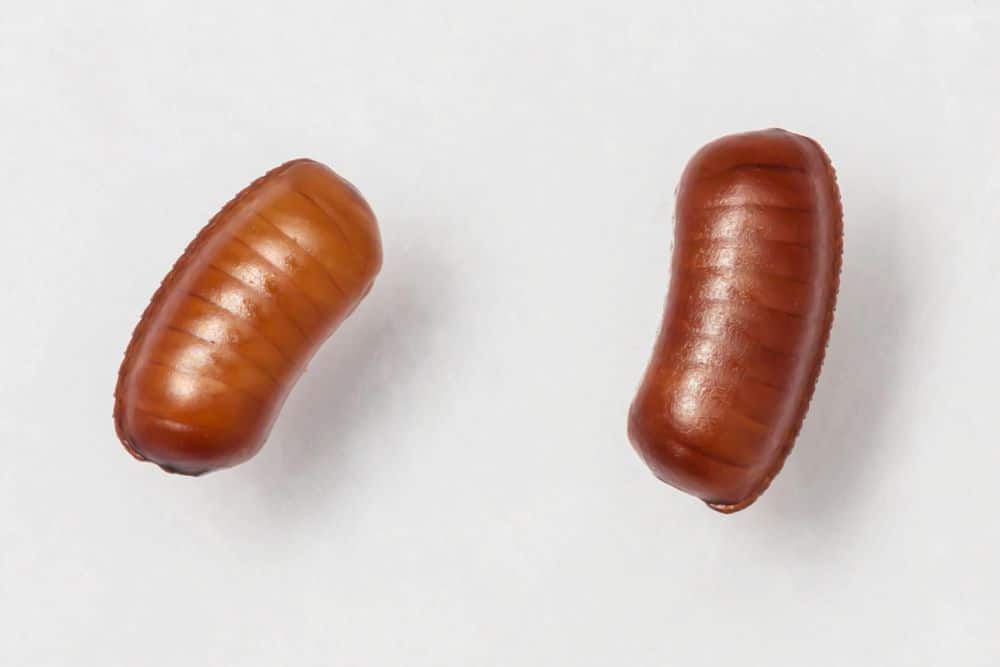
These casings can contain many eggs at once and, of course, result in lots of baby cockroaches invading your home once they hatch. What the eggs look like depends on the species of roach. If you want to get rid of cockroaches from your home, it’s important to know what you are looking for.
American Cockroach
The ootheca of an American cockroach is brown when first produced, but after a few days it turns darker in color (almost black). The ootheca is purse shaped and measures around 0.3 inches in length and 0.2 inches in height.
Oriental Cockroach
These roaches also make a purse shaped casing for their eggs, except these are a reddish brown color. They are slightly larger than the American roach eggs and will measure up to 0.4 inches in length. The difference is that Oriental cockroach oothecae don’t look inflated like others do; they have a flatter shape to them.
German Cockroach
The egg casings of a German roach are smaller than the ootheca of many other roaches and will only measure between 0.23 inches and 0.35 inches in length.
They are a similar purse-shaped sack, like those of other roaches, and the casings are brown. Inside the case, eggs are arranged in two rows.
Brown Banded Cockroach
The brown-banded roach produces an even smaller ootheca of around 0.2 inches. Like the above-mentioned species of roaches, the brown-banded ootheca is also purse-shaped. It will be a reddish brown color.
Where Do Cockroaches Lay Eggs?
Where females lay their eggs will depend on the species. Whatever the species, these tiny egg sacks will be hard to find. To find them will mean you need to carry out a very thorough search.
Most species will deposit the oothecae almost as soon as they have been formed. Others will carry the ootheca for a varying period of time before depositing the casing in a suitable location. The length of time she will retain the ootheca differs with each species. When the female deposits the ootheca, she may stick it to the surface. She does this by using secretions from her mouth, which act like a glue.
The German roach differs from the other species, as the female doesn’t deposit the ootheca and leave it at all. Instead, she carries it, protruding from her abdomen, until the eggs are ready to hatch.
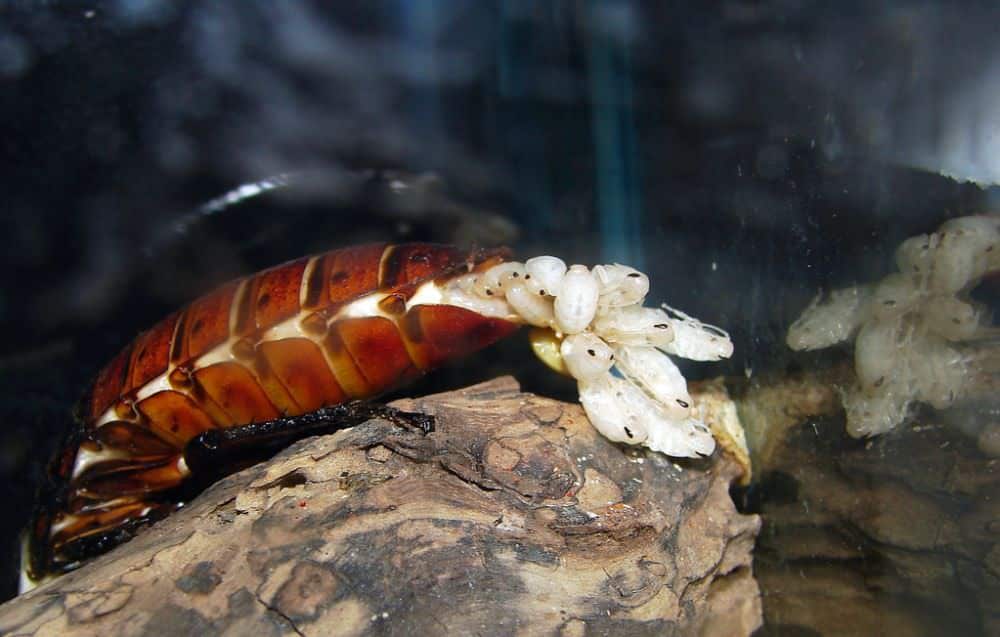
An important thing to remember when looking for roach eggs or oothecae is that a food and water source will always be close by. Once hatched, the nymphs have to fend for themselves, which is why the female lays the sack close to these sources.
Here are some of the most likely places to find where cockroach eggs have been laid:
Dark Corners
Roaches stay away from the light and they also steer clear of human contact. They will look for places where they will be safe from predators such as birds, bats or pets in our home.
If exposed to the light, or startled by a human or animal, a dark corner is where they will run to and hide. This makes such areas safe places for them to lay their eggs too.
Garbage Cans
Garbage cans get emptied frequently, which means a roach will not lay the eggs inside one. However, they are ideal sources of food and therefore ideal areas for newly hatched nymphs. The female may lay the eggs in the rims of garbage cans or in cracks of the containers.
If not on the actual cans themselves, they could be found quite close by. Remember to look for any dark and moist areas close to a garbage can. Check every crack and crevice you can find.
Drawers
The back of a drawer is a good place for roaches to lay their eggs as these are often dark places that are rarely disturbed. These areas generally stay closed for most of the time, so a drawer is an ideal hiding place.
Kitchen Cupboards
Kitchens are warm areas with ample food sources. The backs of cupboards give eggs a good hiding place away from the light and less chance of being disturbed. Think about it—how many times do you actually reach into the back of a cupboard? You may also find them on the tops of high cupboards and around hinges.
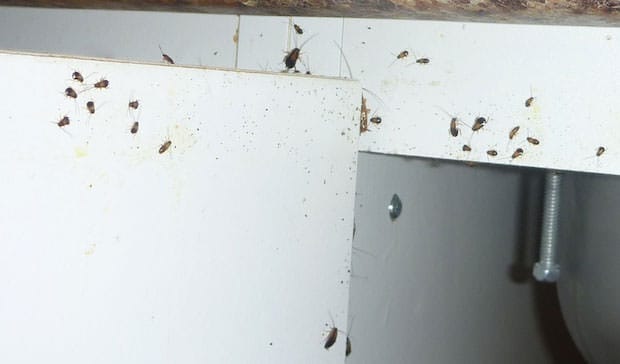
Conditions like this can speed up egg production. It could also allow a female roach to lay more eggs during her life.
Cracks and Crevices
These are among the top locations for roaches to hide their eggs. Floors and walls often develop cracks and fissures over time. Places like this are great for breeding. Gaps often develop around door and window frames, too. These can also be perfect areas to hide egg casings, as they will be undisturbed.
Hidden in these places, the eggs are protected. They are kept away from light and other environmental factors which could harm them. Very few predators are small enough to reach them and they will thrive undetected. Cracks may also appear elsewhere within the home. Any of these areas will provide cockroaches with the perfect site to lay their eggs:
- Ceilings
- Furniture
- Cabinets
Pipes
Sewage and drain pipes are also ideal spots for laying eggs. They are dark, moist, and dirty places, which are away from the light. It is unlikely that cockroaches will encounter humans in piping, making it an optimal breeding location.
Other Areas
Roaches are quite competent in finding food, as well as being great at discovering suitable hiding places for their eggs. They hunt for a spot where they can deposit and camouflage their ootheca safely.
It’s possible to find them in many more places, if the conditions are right. Other areas to consider are:
- Picture frames
- Crawl spaces
- Basements
- Stairs and stairwells, particularly underneath
- Inside clocks
- Bed linen or clothing stored away
- Behind curled wallpaper
- Cardboard boxes or stored papers
- Under carpets and rugs
How Many Eggs Do Cockroaches Lay?
The number of eggs laid differs, depending on the species of roach. No matter what the species, they all lay multiple eggs at a time and produce an ootheca. The four main species that become pests to us and our homes are:
- American roach: this species lays an average of 16 eggs in each case
- Brown-banded cockroach: can produce 10 to 16 eggs per case
- German roach: up to 48 eggs are in each case
- Oriental roach: an average of 16 eggs per case
With this volume of eggs being laid, it’s easy to see how quickly a small problem could lead to a large infestation. A female will continue to produce an ootheca filled with eggs throughout her lifetime.
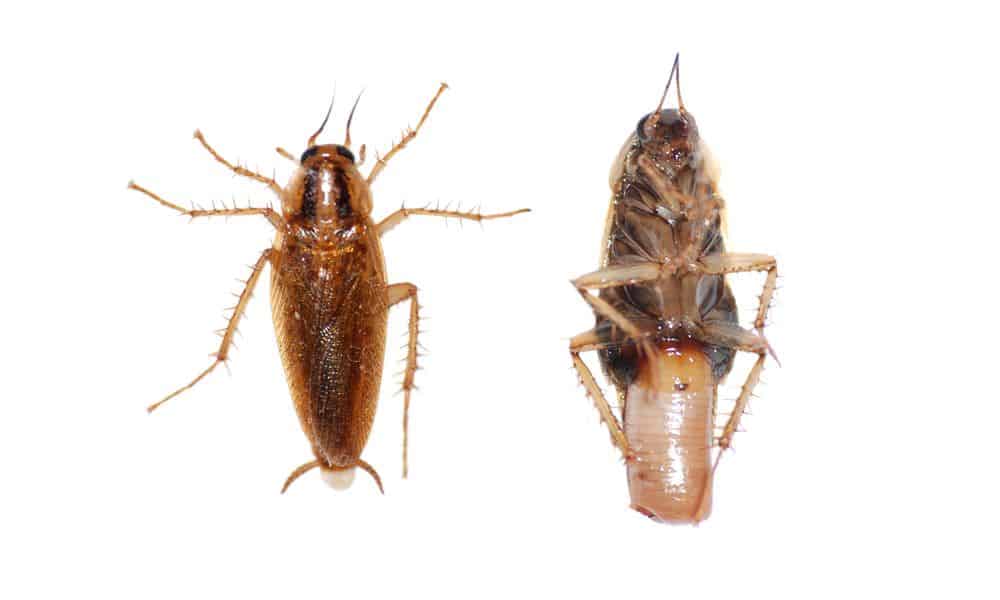
Each female laying many capsules can quickly increase the roach population. Moreover, if a German roach is allowed to roam undetected within the vicinity of your home, then the speed you may develop an infestation is even more rapid, due to the larger number of eggs in each casing.
To have a better chance of dealing with an infestation, you should identify the species. The more you know about what you are dealing with, the better you can equip yourself to handle the problem.
How Long Does It Take for Roach Eggs to Hatch?
This is something that, again, differs with each species of roach. Some hatch quickly and others take a little longer. To understand how quickly a problem can develop, we need to look at each species.
Oriental Cockroach
The female carries the ootheca with her for around 30 hours. After this time, she will move it to a safe environment in a cold and dark place. It will be deposited somewhere close to a food and water source.
Unlike other species, the Oriental roach doesn’t glue the sack to the surface, it is just left there without being secured. She will avoid depositing the ootheca in an area where humans or animals may interfere with them.
During her life, she will produce around eight cases. Once deposited, it will take the eggs about 60 days to hatch into nymphs. Ideal temperatures for her eggs to hatch is room temperature.
Brown Banded Cockroach
The brown-banded roach will also carry her egg case for about 30 hours. She will not deliver it, until the casing has hardened.
Once the ootheca has developed, she will then extrude it from her body and secure it in place by sticking it to a surface using secretions from her mouth, which act like a glue.
We have already seen that each case will contain up to 16 eggs. From this number of eggs, usually only around 12 of them will hatch into nymphs.
During her lifetime, the female will produce about 14 cases. Temperatures play a significant role in how long the eggs incubate. It could take them anywhere between 37 and 103 days to hatch.
American Roach
An American roach will carry the egg casing with her for up to 24 hours on average. Once ready, she will drop the ootheca into a safe place that hides it from light and potential predators. The place she chooses will also be close to a food and water source so the hatching nymphs have somewhere to feed.
She will secure the casing in place using the secretions from her mouth to glue it to the surface. The eggs will incubate for 24 to 38 days before hatching into nymphs. During her lifetime, the American roach could produce up to 90 casings of eggs.
When her reproductive system is at its peak, the female could produce two sacks each week. On average though, she will produce one case each month and this will continue for around ten months.
German Cockroach
The female carries the ootheca with her until they are almost ready to hatch. She will then place the ootheca in a safe and sheltered environment, one or two days before hatching. She will choose a location close to a food and water source to allow the nymphs to feed as soon as they emerge.
A German cockroach gives you a little more to worry about than the others. As we have seen, each ootheca contains a large number of eggs and incubation time is on average around 28 days. With ideal conditions, they could hatch within around 14 days or it could take as long as 34 days.
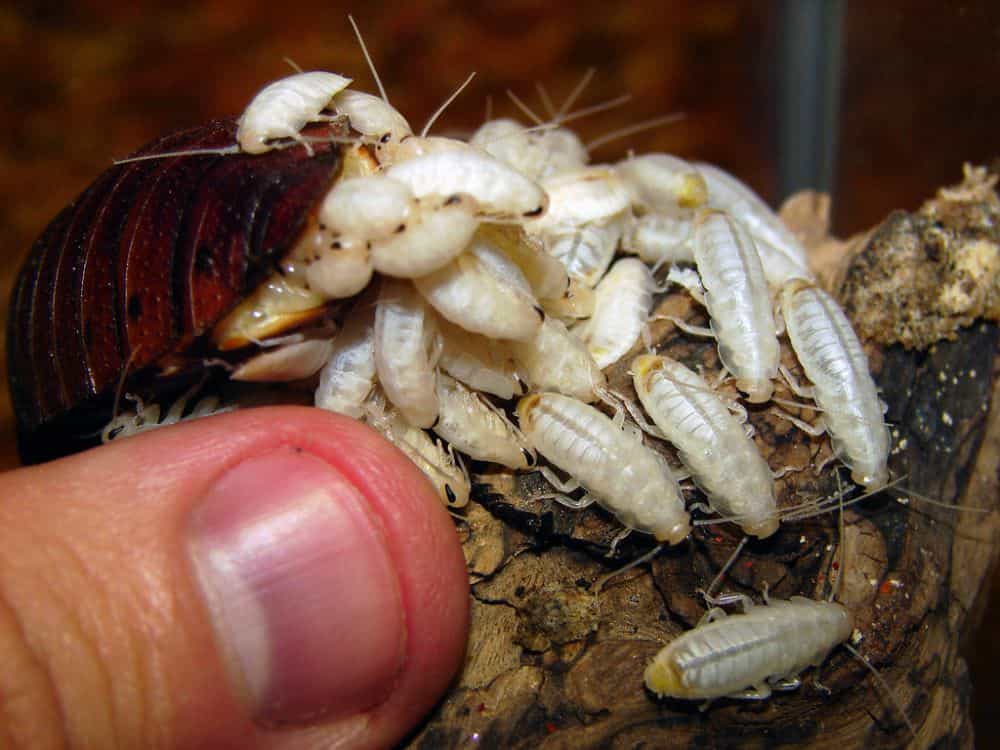
The female will produce around four to eight casings of eggs throughout her lifetime. Roughly two weeks after depositing an ootheca, she will begin to form the next casing, to start the cycle again. German roaches will produce between four and eight oothecae during their lifetimes.
How to Kill Roach Eggs
When cockroach oothecae are spotted, this is a clear sign that there is a severe problem. The presence of eggs usually means there is an infestation. This needs dealing with immediately and effectively.
The methods you use to kill the live roaches will not work for the eggs. This is often why people find that their home becomes re-infested. They thought they had completely dealt with the problem, but that was not the case. It was only the adults that were killed and not the eggs, which allowed the nymphs to hatch and grow into adults.
If you don’t kill the eggs, the newly emerging population could prove an even bigger problem. The new adults may well have become immune to the products you are using.
To kill the eggs, a different approach must be taken. You can use all the usual methods to attack the newly emerging nymphs and adults. However, if you don’t get the eggs as well, they will just keep coming back.
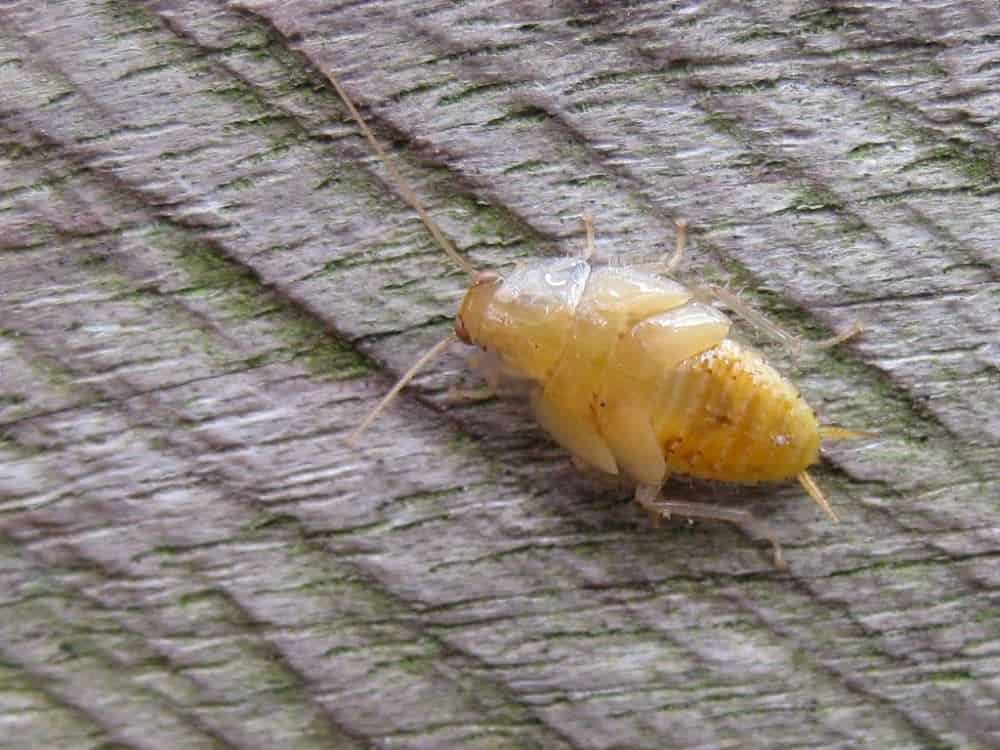
One of the hardest parts of killing the eggs is finding them. We have already explained where cockroaches like to hide their eggs and how well they hide them. They use places we would probably never even consider. If you do find a few roach eggs, you can guarantee there will be more around.
You could opt for crushing them to kill them, but that will only deal with a few. Some will be in places you can’t reach or see. You need to use effective treatments capable of killing ALL of the eggs.
If you find eggs, you can spray them directly with a proprietary pesticide, or cover them with boric acid. Alternatively, an insect growth regulator (IGR) product is an effective way to kill the eggs. This will make the eggs sterile, which prevents them from hatching.
IGRs are also good for targeting juvenile roaches if the eggs have already hatched. The nymphs eat the product, which then results in them becoming sterile and unable to reproduce.
Seeing as these treatments involve killing on contact, it is essential that you search for any possible hiding places by examining your house thoroughly. However, it may seem impossible to inspect small crevices, such as gaps in ceilings or tiny cracks in door frames.
Therefore, it is highly advisable to spray these areas, along with the other ‘egg-laying hotspots’ mentioned above, regardless of whether you have discovered ootheca in that location or not.
You could also use products to treat the adults which kills them slowly. This way they will walk back to their hiding places before the poison is fully ingested and kills them. They will then be closer to newly hatched nymphs, who will feed on the dead carcasses and also die. However, this will not affect the eggs that are still in the oothecae.
Summary
If you’re seeing roaches around your home, this is obviously a sign of infestation. The more you see, the bigger the problem. Adult cockroaches will be laying their eggs in multiple locations. This means treating only the adults will not solve the problem.
To tackle an infestation, you need to eliminate the cockroach eggs too. If you don’t, the problem will continue and become even worse as the eggs hatch into nymphs. With signs of an infestation, you need to take prompt and proper action to kill cockroaches, nymphs and eggs.
Now that you are aware of what cockroach eggs look like, how rapidly an infestation can occur and where their ideal hiding spots are, you are now better equipped to prevent this infestation from getting out-of-control.


